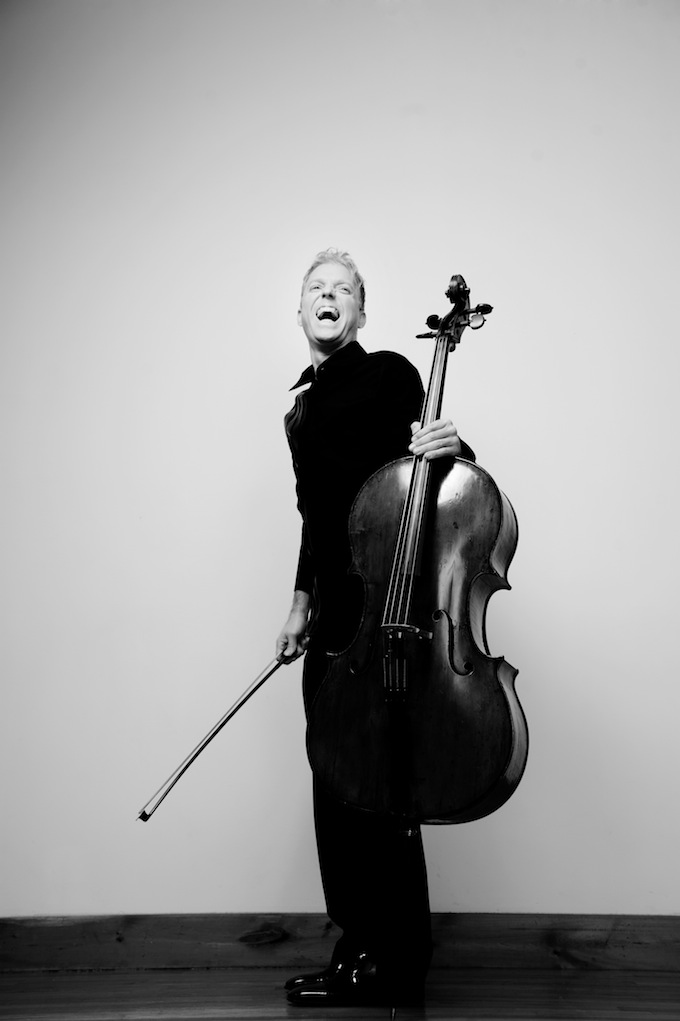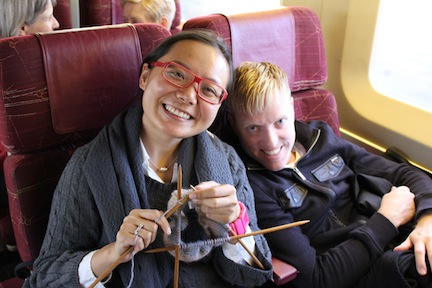
Toronto Symphony Orchestra principal cello Joseph Johnson describes the thrill of preparing for this week’s performances of Richard Strauss’s Don Quixote, which begin on Wednesday:
- OPEN LETTER | Christina Petrowska Quilico Remembers Pierre Boulez - January 7, 2016
- Op-ed: The Compositional Voice and the Need to Please - September 4, 2014
- Onomatopoeia: The Thin Edge New Music Collective Sounds Off - May 10, 2014
This week I have the honour of playing Richard Strauss’s Don Quixote at Roy Thomson Hall with the Toronto Symphony Orchestra. Three times. As if that weren’t enough, TSO Conductor Laureate Sir Andrew Davis, one of the world’s champion Strauss conductors, will be on the podium.
Don Quixote is really a massive cello concerto, written by my favourite composer for solo cello, and performed by an enormous orchestra.
I first heard the piece when I was a kid. I was at the Ravinia Festival listening to it being performed by the Chicago Symphony with cellist Lynn Harrell as soloist. It was from that moment that I became enraptured by this piece.
It’s a work about the trials, tribulations, and dreams of Don Quixote, the hero from Miguel de Cervantes’s 1605 novel about a nobleman who, after reading too many chivalric novels, loses his wits and imagines himself a knight.

Teng Li, our amazing principal violist, will be playing the huge viola solo that is featured in the work as well. While I play the role of Don Quixote, the viola solo represents my sidekick, Sancho Panza. I’m calling Teng “Sancho Teng-za” this month.
Don Quixote is the “hero,” leading great battles, falling in love with the beautiful Dulcinea, slaying dragons, and other “heroic” pursuits. Sancho Panza is his reality check, bringing Don Quixote back down to earth, and pleading with him to calm down. Sancho Panza is more of a humorous role. He interrupts Don Quixote’s dream world and goes off on a couple of tangents, which is very clearly depicted in the way Strauss writes for the solo viola.
Within Don Quixote are gorgeous melodies representing the love of Quixote’s life, Dulcinea, who is portrayed in a beautiful oboe solo which I can’t wait to hear TSO Principal Oboe Sarah Jeffrey play.
There is a fight scene where Don Quixote thinks that windmills are giants, and you can really hear the windmills in the orchestra. That sound is created with a wind machine in the percussion section, played over big slow moving crescendos and decrescendos of the orchestra. It’s a great effect. There are moments of insanity, of very intense clarity, of longing, of hilarity, and finally, of death. This 45-minute piece contains every emotion possible, which is a real challenge.
Strauss’s Don Quixote is unlike any other concerto I play. It’s more like a Strauss symphony with a huge solo cello part.
For instance, after I walk onstage, I sit there for 7 minutes before I play my first note. That’s an eternity for a soloist. This piece is like the book, with chapters. It requires knowing the background of the story, finding the right sound and character for each chapter, and really feeling the moment.
Of course, it is also a technically demanding piece, so it will be a great challenge to combine the technical aspect with the emotional aspect. I imagine that I’ll be a puddle of goo by the end of it — extremely happy, fulfilled, goo.
For the past month, I’ve been in my Don Quixote cave. I put my blinders on and said goodbye to the outside world. I’ve spent many, many hours practicing the part, going through the score and pulling myself into this role.
My favourite times to practice are always after TSO rehearsals and concerts.
After a show, I’m completely in the groove. I go to one of the dressing rooms backstage and set up my cello, change out of my concert clothes, and as all the TSO musicians are leaving the building, I get to work.
It’s fun being the only person in Roy Thomson Hall. I’m usually practicing in the dressing room until the security guard comes and tells me to go home. (Which is very late.) It’s my favourite place to practice because there are no distractions like there are at home.
I’ve been waiting my whole life to play Don Quixote with orchestra. I’m thrilled that my first time happens to be with a great orchestra, full of colleagues and friends whom I love and respect. I have a fantastic conductor who breathes Strauss — it’s really part of his DNA. I couldn’t ask for a better situation.
I hope those of you reading this will join in the audience to be a part of it, too—it’s going to be a bla
st!
For all the details on this week’s three performances — on Wednesday, Thursday and Saturday — click here.
+++
Here is a performance of Richard Strauss’s Don Quixote, Op. 35, recorded in the early 1980s by conductor Wolfgang Sawallisch and the NHK Symphony, with Misha Maisky as the soloist.
The piece is constructed with an introduction, the presentation of the Don Quixote and Sancho Panza themes, followed by 10 variations and a finale depicting the death of Don Quixote:
- OPEN LETTER | Christina Petrowska Quilico Remembers Pierre Boulez - January 7, 2016
- Op-ed: The Compositional Voice and the Need to Please - September 4, 2014
- Onomatopoeia: The Thin Edge New Music Collective Sounds Off - May 10, 2014



